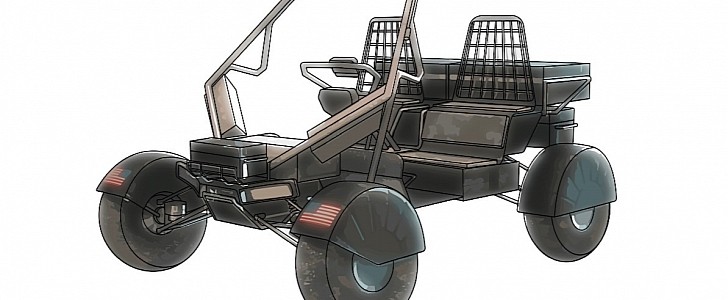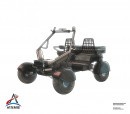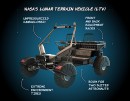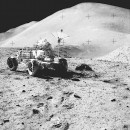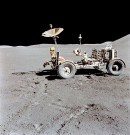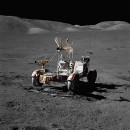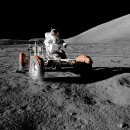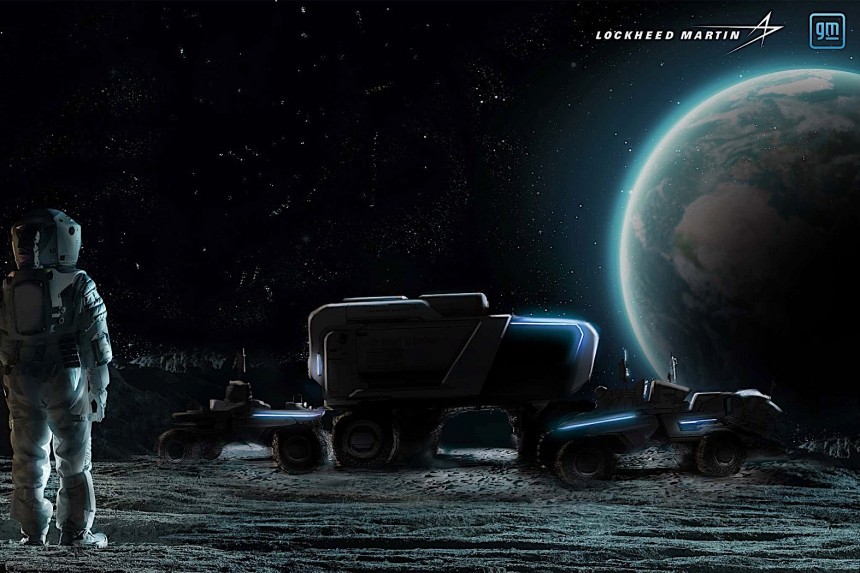By the time this year is done, humanity should have stepped into the age of the Artemis lunar program. Seen not as a continuation of Apollo, but rather as a complete shift in approach when it comes to space exploration, Artemis should mark the first step towards the creation of a space station around the Moon, a base on the surface and, ultimately, an expansion of human reach all the way to Mars.
But for that to happen, a lot of new technologies have to be developed. Including some that will help astronauts move faster and further on the lunar surface. Enter the Lunar Terrain Vehicle, or LTV.
Back in early 2020, NASA issues a couple of Requests for Information (RFI), asking industry players for help in developing “robotic mobility systems and human-class lunar rovers.” In words we can all understand, that means more or less autonomous systems that can transport instruments and research or explore places humans can’t reach, but also a wheeled machine capable of moving people to and fro.
Before going any further you should know that even if the first crewed mission to the Moon is looming (Artemis III is scheduled to land there some time by the middle of the decade), details on the LTV are very scarce. But NASA sort of kind of knows what it wants, so here it goes.
But first, the why. During the Apollo program of the 1960s, the crew of Apollo 11, unaided by any rovers, covered about half a mile of lunar surface during their over 20 hours stay there. Once the Boeing-made Lunar Roving Vehicle (LRV) got into the game with Apollo 15, that distance grew to over 22 miles (35 km), spread on an area of 4.7 miles (7.6 km) around the landing site. Not a stunning distance by any means, but incredibly better than before.
So, for Artemis (probably not for Artemis III, but subsequent missions), NASA plans to already have a helping rover in place.
The machine will of course have to be capable of carrying humans - two of them. It will be unenclosed, meaning no cabin and, subsequently, astronauts wearing their full gear riding inside.
Aside from humans, the rover should also be capable of carrying cargo, and could include “transport and operation of scientific instruments and technology demonstration payloads.” It will have two equipment racks, one up front and the other at the rear, the mandatory headlights, a navigation console, communication equipment (including to allow remote operation), and a large suite of sensors and cameras.
In all, the rover is expected to be able to carry up to 500 kg (1,100 pounds), including two fully suited astronauts. It must be able to traverse across lunar highland terrain, including in the South Pole region and on slopes of at least 15 degrees.
The electric drivetrain that will power it along will have to be rechargeable “from internal power generation sources and from other lunar surface assets,” meaning the descent lander or an on-board solar array. And last, but not least, the entire thing should be capable of operating and withstanding harsh temperatures ranging from 280 to minus 280 degrees Fahrenheit (138 to minus 173 degrees Celsius).
So far, the NASA RFI only got a single commitment, coming from Lockheed Martin and General Motors. The two companies announced in May 2021 they are joining forces to develop an LTV, one that could “allow astronauts to explore the lunar surface in unprecedented fashion.” So far, no other development on this front was announced by the two.
When it made the request in 2020, NASA expressed hopes that whatever the rover will end up being, it could “spur innovations in electric vehicle energy storage and management, autonomous driving, and extreme environment resistance” for vehicles operating here on Earth.
You can find the NASA RFI and all the available details on the LTV in the PDF section attached below. For now, there is no deadline set for a prototype to be shown.
Back in early 2020, NASA issues a couple of Requests for Information (RFI), asking industry players for help in developing “robotic mobility systems and human-class lunar rovers.” In words we can all understand, that means more or less autonomous systems that can transport instruments and research or explore places humans can’t reach, but also a wheeled machine capable of moving people to and fro.
Before going any further you should know that even if the first crewed mission to the Moon is looming (Artemis III is scheduled to land there some time by the middle of the decade), details on the LTV are very scarce. But NASA sort of kind of knows what it wants, so here it goes.
But first, the why. During the Apollo program of the 1960s, the crew of Apollo 11, unaided by any rovers, covered about half a mile of lunar surface during their over 20 hours stay there. Once the Boeing-made Lunar Roving Vehicle (LRV) got into the game with Apollo 15, that distance grew to over 22 miles (35 km), spread on an area of 4.7 miles (7.6 km) around the landing site. Not a stunning distance by any means, but incredibly better than before.
The machine will of course have to be capable of carrying humans - two of them. It will be unenclosed, meaning no cabin and, subsequently, astronauts wearing their full gear riding inside.
Aside from humans, the rover should also be capable of carrying cargo, and could include “transport and operation of scientific instruments and technology demonstration payloads.” It will have two equipment racks, one up front and the other at the rear, the mandatory headlights, a navigation console, communication equipment (including to allow remote operation), and a large suite of sensors and cameras.
In all, the rover is expected to be able to carry up to 500 kg (1,100 pounds), including two fully suited astronauts. It must be able to traverse across lunar highland terrain, including in the South Pole region and on slopes of at least 15 degrees.
The electric drivetrain that will power it along will have to be rechargeable “from internal power generation sources and from other lunar surface assets,” meaning the descent lander or an on-board solar array. And last, but not least, the entire thing should be capable of operating and withstanding harsh temperatures ranging from 280 to minus 280 degrees Fahrenheit (138 to minus 173 degrees Celsius).
When it made the request in 2020, NASA expressed hopes that whatever the rover will end up being, it could “spur innovations in electric vehicle energy storage and management, autonomous driving, and extreme environment resistance” for vehicles operating here on Earth.
You can find the NASA RFI and all the available details on the LTV in the PDF section attached below. For now, there is no deadline set for a prototype to be shown.
